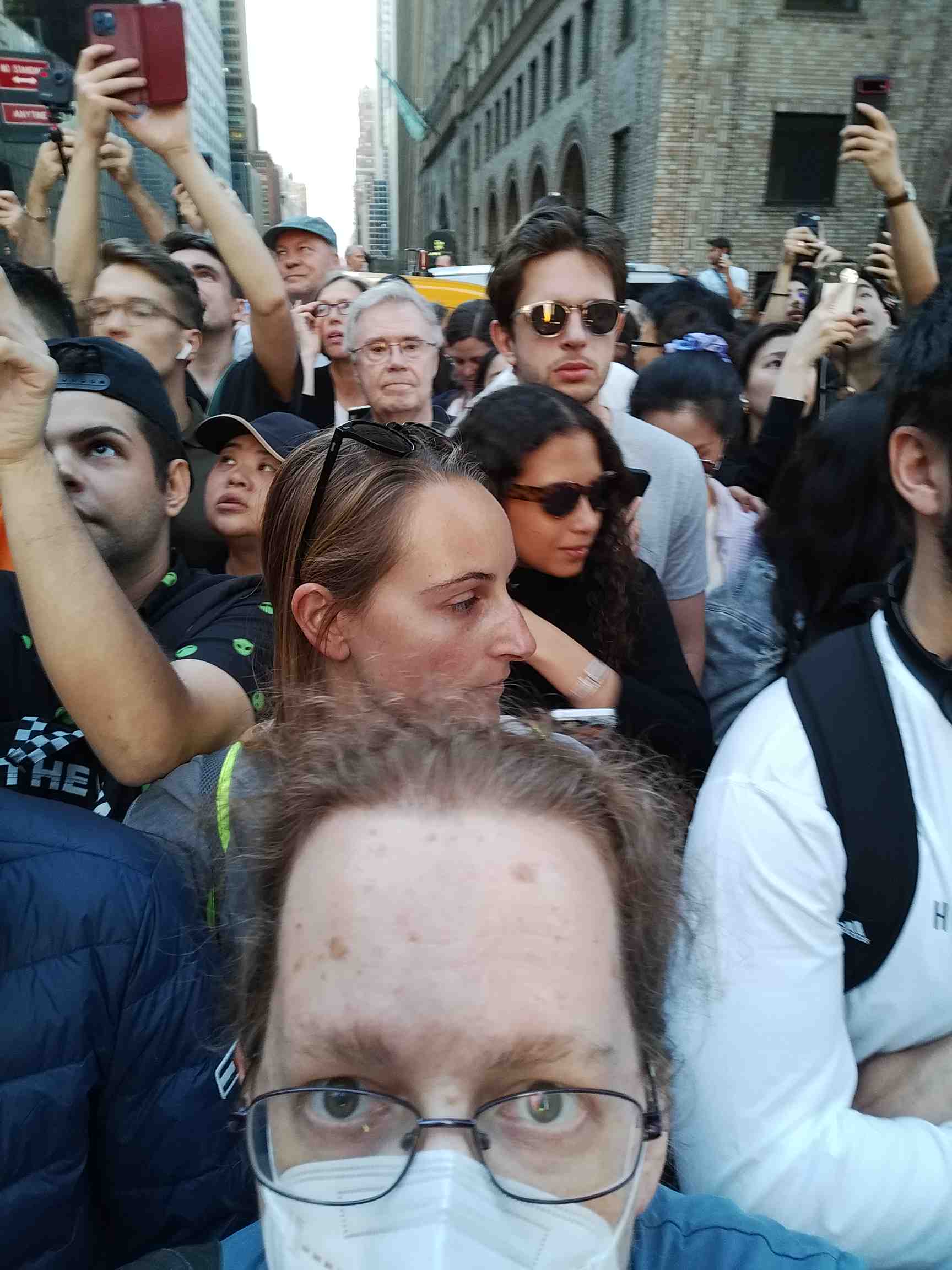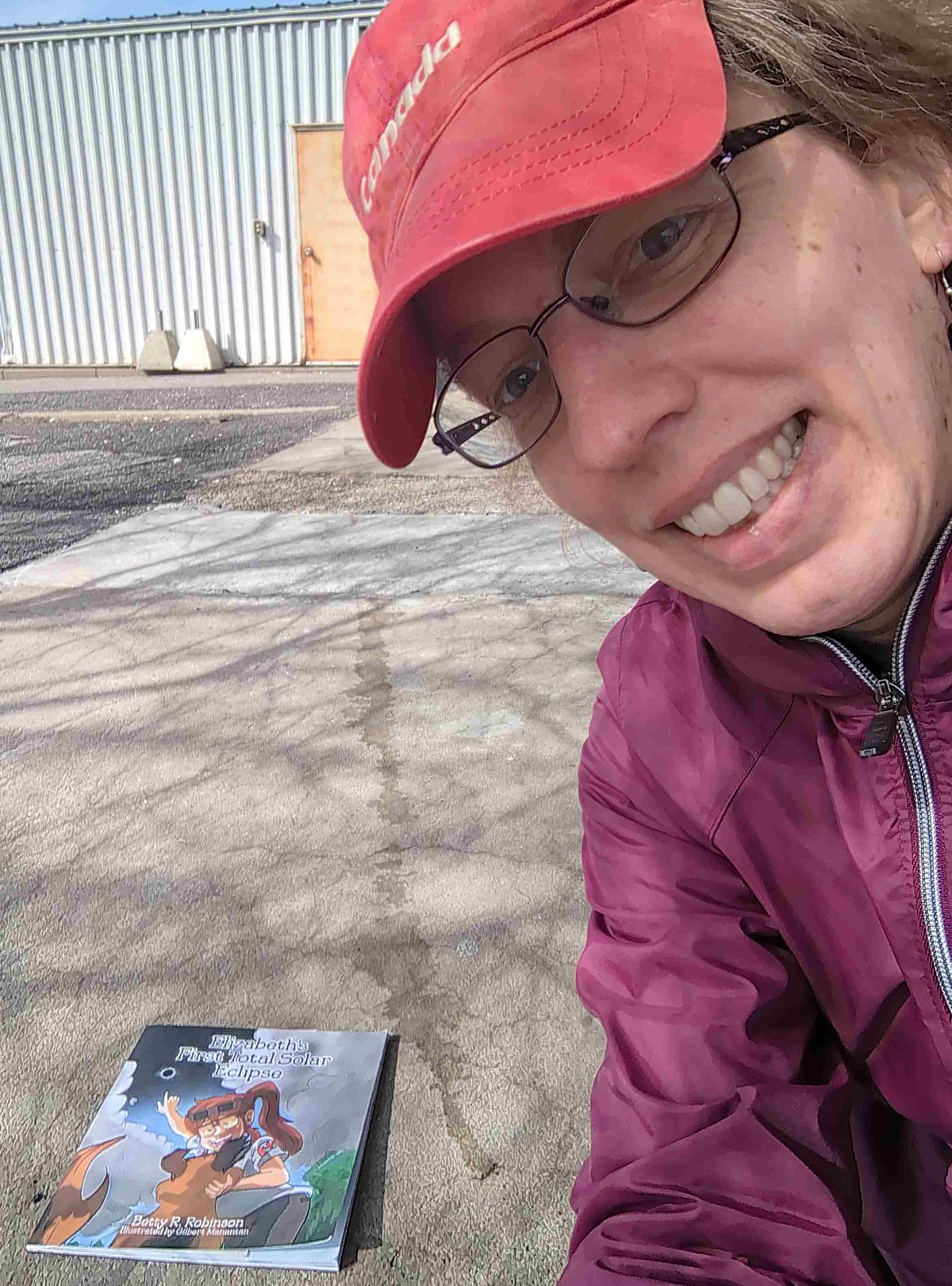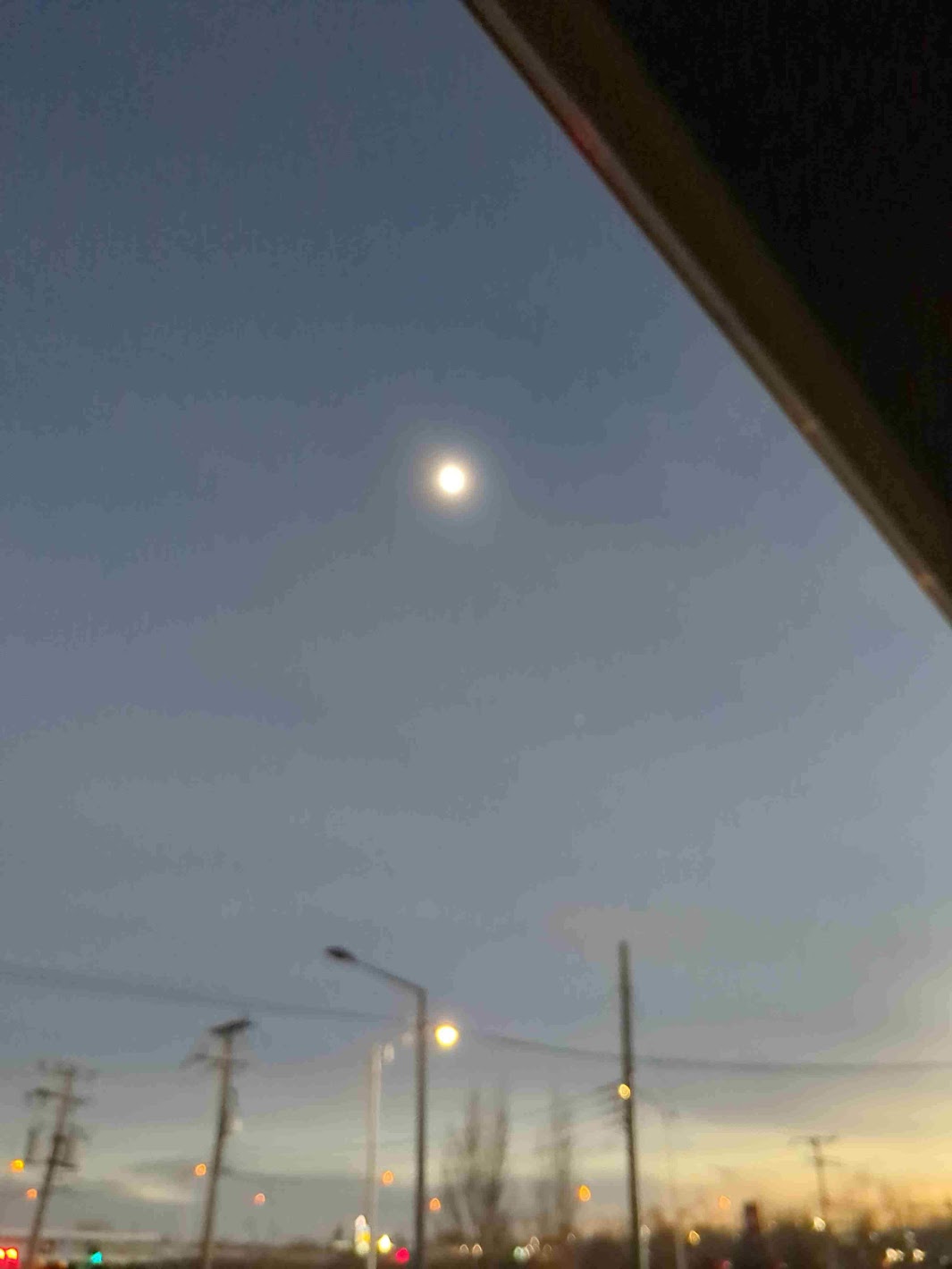Trains, planes and a total solar eclipse! Watching the moon block the sun was a transportation adventure (exclusive)
Weather forced us east instead of west, but we managed to experience totality.

DORVAL, Québec — I needed a big sky, and I was willing to stand outside a remote, chilly train station for hours to get it.
A total solar eclipse happened in the skies here, just outside of Montreal, on Monday (April 8). The sights of the bigger city would have been incredible, but so too would've been the deep crowds.
Based on my experiences chasing "Manhattanhenge" twice in New York City last year, bathrooms, elbow room and sightlines would have been at a premium. So when my husband objected to being in big crowds during eclipse planning, I agreed.
Related: I'm taking the train to see the 2024 solar eclipse in Canada. Here's why I'm riding the rails
My husband and I live in Ottawa, Ontario, which would have just shy of 99% totality on April 8 as the moon passed over the sun. That's good, but we Canadians wanted more, as we missed a chance to see totality in August 2017 in favor of Coldplay tickets in Toronto. (No regrets, especially as the band mentioned that solar eclipse mid-show.)
Fearing road traffic, at first my husband and I booked tickets to seek totality by train. Our original itinerary brought us west toward Toronto, but the weather forecast got fiercely cloudy for all Ontario stations the day before the big event.
So, late on Sunday (April 7), crowd and cloud conscious, we made a last-minute interprovincial ticket change east, to the only other eclipsed train station near us, aside from Montreal's urban zone: Dorval. It's a few minutes away by shuttle from Montréal-Trudeau International Airport, which meant a day of both trainspotting and planespotting was in store for us. And if we were lucky, eclipse-spotting, too.
Breaking space news, the latest updates on rocket launches, skywatching events and more!
Both trains and planes run in my family, you see. I'm upset that the rails run through unceded Indigenous territory and killed some of the Chinese construction workers who built it, but I also recognize my kin's legacy on the tracks.
During the Apollo era, my maternal grandfather by marriage worked for the Penn Central and New York Central railroads from an office in Toronto. My grandmother, his wife, did paperwork for other Canadian rail lines; she was one of the select few who knew of troop movements in-country during the Second World War as the young soldiers shipped out, or at least that's the family lore.
I ended up working as a journalist on the aerospace side; my paternal line has held positions at places like passenger plane regulator Transport Canada, as well as in the Royal Canadian Air Force. I was lucky to have childhood adventures in aerospace, such as flying in a DC-3 to Michigan, running around the Prime Minister's private jet fleet and seeing Santa Claus visit by helicopter.
But trains are a strong interest of mine, too. Decades ago, I rode a historic locomotive in Wakefield, Québec — it's sadly no longer running, however. While growing up, I also was thrilled to occasionally clamber about the trains on display at the Canada Science and Technology Museum in my hometown of Ottawa. (I even met Canadian astronaut Roberta Bondar at the science museum in 1992 when I was a child, so I've been very lucky indeed to live so close by to it.)
Related: Artemis 2 moon crew announcement felt like a Canadian history time warp
So, to try to honor my family's two-pronged transportation history, what better way to while away the hours before an eclipse than outside a tiny train station, near an airport runway? I'm no expert on the big locomotives coming through, at least not yet. But even a passing look at the cities listed on train cars showed me cargo coming from both Canada and the United States en route to the port city of Montreal.
VIA Rail, our passenger provider, also had numerous trains running on the big west-east corridor where most of Canada's population lives, between Toronto and Quebec City. Audio announcements in English and French cheerfully called out all the little towns these trains would touch, along with arrival and departure times.
I sat on the shady side of the station with my husband for hours, leisurely watching the trains go through and glimpsing the occasional groundhog or pigeon. Bathrooms, snacks and shelter were steps away in the station, and a few passenger planes zoomed overhead. We enjoyed the unseasonably warm temperatures of 55 degrees Fahrenheit (13 degrees Celsius) in comfy lawn chairs we toted on the train.
Next, we swung around into the sunshine to catch the eclipse. That presented, of course, a show of its own. About 20 minutes from total eclipse, a rainbow-colored halo began to circle the sun and adorn the thin cirrus clouds high up. The light turned muddy, similar to how the sun's rays look through smoke. Ghostly shadows filtered through the budding trees as refracted sunlight spilled around the moon.
I quickly pulled out a children's book I copy-edited for a friend of mine: "Elizabeth's First Total Eclipse" by Betty R. Robinson (Tellwell Talent, 2023). Sitting on the sidewalk, I took an obligatory selfie beside the book and ghost-branches.
Shade deepened in the sky halo. Streetlights and headlights blinked on in the station's parking lot, as cars on the nearby Autoroute du Souvenir freeway pulled over. A taxi driver asked for a pair of eclipse glasses; I had extras, and, after advising him when totality would strike, I told him to keep the set I gave.
Armed with my own pair, kindly donated by Western University's space program in London, Ontario, I saw the sun's disk slowly diminish into a thin crescent. Then all turned black. I whipped off my glasses to safely bare my eyes to the heavens.
The sun's white corona shone brightly, tripling the sun's diameter at the top and the bottom of the disc. Fiery solar-kissed red glowed around the right edge of the moon, and at least two planets popped into view on either side.
For 90 seconds, the horizon was navy blue with yellow tinges. The sky's zenith was grayish navy as the narrowest of space shadows sailed over us. A small crowd of taxi drivers and train passengers gathered around us in silence, in reverence.
Then came the flash, the diamond ring, as the sun's light shot at our planet through a deep valley of the moon's receding edge. Safety glasses back on, I saw the solar glow slowly creep around the moon again.
Related: The 5 stages of the 2024 total solar eclipse explained for April 8
And then totality was done, but that strange red glow remained in my mind on the train ride home. Coldplay lyrics, deepened by my recent studies of classics and history at the University of Leicester, ran through my head. I pondered privilege in seeing the eclipse, and whether I had been deserving of it:
I've been reading books of old
The legends and the myths
The testaments they told
The moon and its eclipse
And Superman unrolls
A suit before he lifts
But I'm not the kind of person that it fits ...
I also couldn't help but look at the setting sun a bit differently. I saw a whole other side of the sun that's not usually visible. The eclipse felt alien, yet it's been periodically happening on Earth for eons. What other secrets of the sky haven't I considered in my 30 years of enjoying space, I wondered, and what would be shown to us next?
When the next solar eclipse happens, our guide on how to observe the sun safely guide tells you what you need to know to look at the sun. We also have a guide to solar eclipse glasses, and how to safely photograph the sun if you'd like to get practicing before the big day.

Elizabeth Howell (she/her), Ph.D., was a staff writer in the spaceflight channel between 2022 and 2024 specializing in Canadian space news. She was contributing writer for Space.com for 10 years from 2012 to 2024. Elizabeth's reporting includes multiple exclusives with the White House, leading world coverage about a lost-and-found space tomato on the International Space Station, witnessing five human spaceflight launches on two continents, flying parabolic, working inside a spacesuit, and participating in a simulated Mars mission. Her latest book, "Why Am I Taller?" (ECW Press, 2022) is co-written with astronaut Dave Williams.





